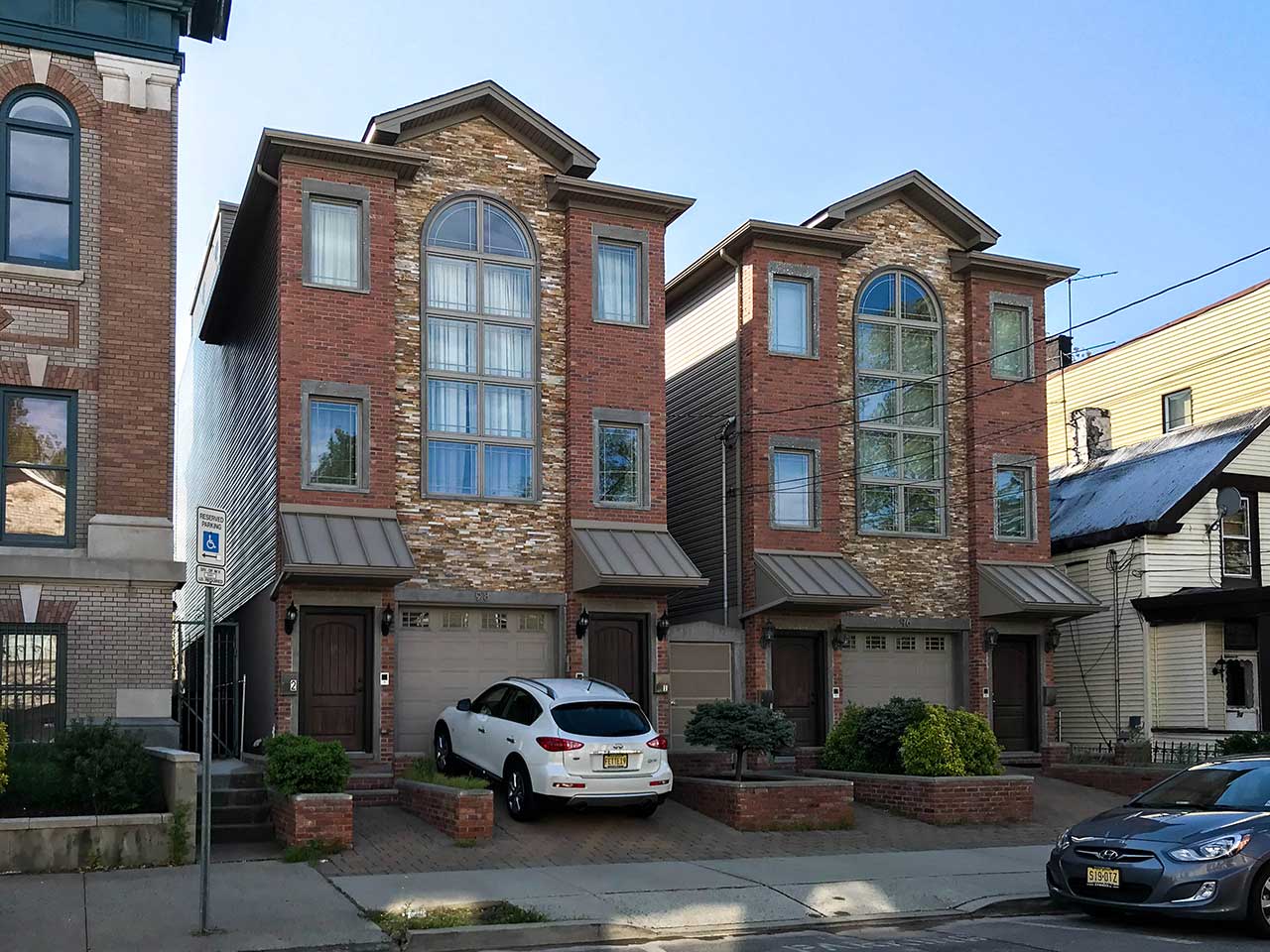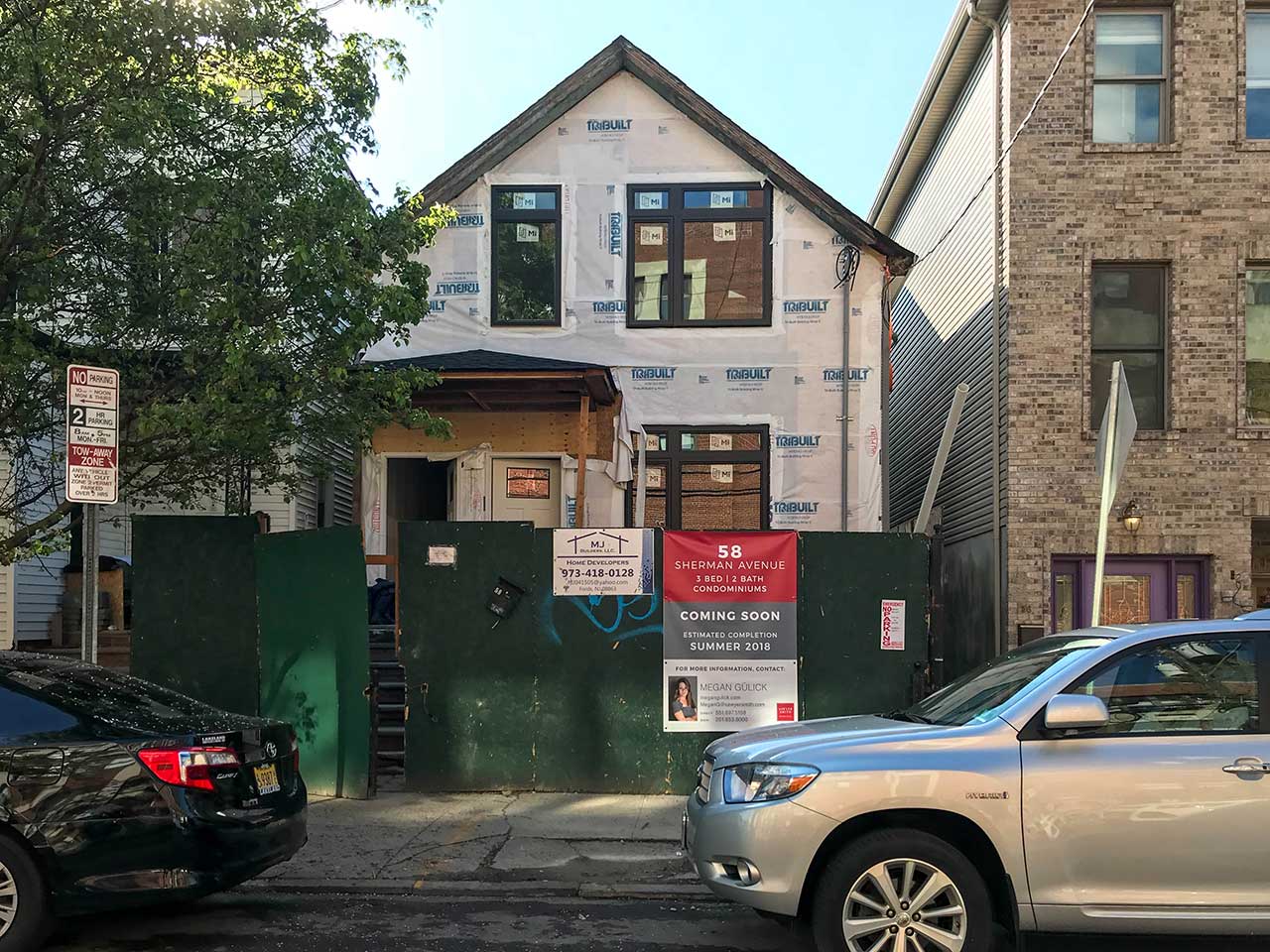
Editor’s note: Rima Abousleiman works as an architectural designer in Jersey City and has studied urban planning in cities around the world. Here she weighs in on how the Bayonne Box makes Jersey City more car-centric and proposes steps the city can take to become more walkable.
While no one agrees the housing style famously dubbed the “Bayonne Box” is any sort of architectural marvel, it still seems disparaging that Mayor Fulop would institute an executive order implementing a ban on demolitions, to begin immediately, without an alternative solution that would operate in tandem. The ban targeted one-four single-family homes — those most often demolished and replaced with “Bayonne Boxes.”
The construction of the Boxes isn’t the fault of the developers who build them, but rather the fault of Jersey City Zoning that not only allows for but also incentivizes their construction.
In the initial days following the announcement of the moratorium, tensions between residents and the city were high, and several developers filed a lawsuit against Mayor Fulop. But since then, it seems progress is being made in ways that could move Jersey City toward a better future.
The main gripe with the Boxes is that their existence is centered around the car, specifically the impact it has on parking. When they first entered the scene, it was a time in which people wanted to bring the suburbs to the city; they wanted the perks of suburban living, such as owning a home and a car in an urban setting. Today, people are moving to cities all over the world to avoid the expenses of having a car. The problem with Jersey City is that much of its infrastructure remains reliant on the car. According to a tweet from Mayor Fulop, there are 99,612 occupied housing units in Jersey City, 38% of them have zero vehicles, 44% have one, 15% have two, and 3% have three or more.
In a city where Bayonne Boxes pepper the streets, the walkability of the environment is compromised. Pedestrians, rather than walking between thoughtfully designed facades and street trees are often left weaving in between vehicles that are parked half in a driveway and half on the sidewalk.
In another tweet, Mayor Fulop mentioned that local builders were inquiring about why the curb cut elimination was being considered when it creates parking for the homeowner. He answered, “Bayonne Box creates a garage that’s often not used for cars but turned into a 3rd illegal apartment. Secondly, curb cut provides parking for that owner but also privatizes that portion of the street as only that homeowner can use the public street for their car and it ruins the streetscape when we eliminate trees and have cars parking half on the sidewalk.”

To further complicate matters, per zoning regulations, rehabilitated homes cannot apply for a new curb cutout. However, if the developers demolish the house to build a new structure, then they are able to add a curb cutout. The city is essentially incentivizing the demolition of existing houses in favor of cookie cutter boxes.
With the focus now shifting away from building around the vehicle and instead toward the pedestrian, the hierarchy of modes of transportation needs to be reevaluated. The elimination of curb cuts, which will have consequences on vehicular transportation will need to be subsidized by a better public transportation system that encourages daily use.
While public transportation, thanks to the PATH and Light Rail, is prevalent around Jersey City, there still remain areas of the city which are hard to travel to and from without a car. Mayor Fulop has said, “Along with parking changes we’re placing in budget $1 million to start planning/traffic models for a rapid intracity bus system. Ideally shutting down some streets to cars and only using for buses/bike lanes.” The introduction of lanes exclusively for buses and bikes will be revolutionary for the city, cutting down on commuter traffic and providing more environmentally (and healthy) alternatives to getting around.
In the book “Happy City,” by Charles Montgomery, he makes the argument that a happy city is a liveable city. He cites examples from all over the world where implementing urban design and policy change resulted in significant benefits for the city and the well-being of its inhabitants. One of the most poignant examples is from Bogota, Colombia where Mayor Enrique Peñalosa had noticed that the city was so oriented around cars, and the streets had become dangerous because of their pollution and their speed. Rather than continue with a highway plan for the city, he invested the budget into bicycle paths, public parks, pedestrian plazas, and a rapid transit system for the city.
The result of Peñalosa’s experiment was overwhelmingly positive — the streets became much safer for cyclists, pollution decreased, the social divide between those who could afford a car and those who couldn’t began to dissipate. From such small, meaningful gestures, a movement was born.
The solution to Jersey City’s problem isn’t a demolition ban, because the problem lies in its dependence on the car. By following in other cities’ footsteps and making the car second to pedestrians, Jersey City can take a major step toward becoming a happy city, too.
